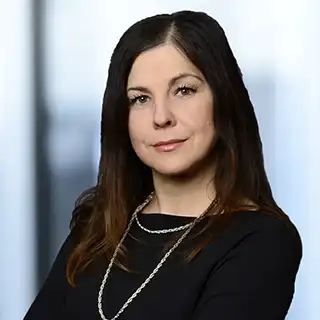Interview with Dr. Christine Lemaitre, DGNB – Climate Protection is a task for society as a whole, which is also increasingly reflected in the legal framework for the economy in Germany. The real estate industry has a special responsibility in this regard: the building sector contributes around 35 per cent to final energy consumption and around 28 per cent to CO2 emissions. In order to achieve the specified climate protection targets at portfolio level, HIH Invest’s asset management is developing strategic measures with the aim of reducing CO2 consumption on a portfolio-wide basis, increasing energy efficiency and conserving resources.
HIH Invest is in close exchange with industry associations and scientific initiatives. The question that concerns us: How can real estate companies make their contribution to climate protection across sectors and beyond national borders? To conclude our interview series, we speak with Dr. Christine Lemaitre (Executive Director of the German Sustainable Building Council DGNB). The DGNB was founded in 2007 on the initiative of architects, engineers, scientists, investors and representatives of the construction industry to develop a certification system for the sustainability of real estate. Today, the non-profit association with more than 1600 member organisations is Europe’s largest network for sustainable building.
Dr Lemaitre, is the real estate industry aware of its responsibility for climate protection?
Climate risks, regulation and changing market demand – the increasing pressure has brought movement into the construction and real estate industry, although it often acts somewhat ponderously with regard to new developments. After the initial phase of declarations of intent, there were first signs of fatigue in the industry and the topic of sustainability stagnated. All market participants now perceive very clearly that more transparency and commitment are being demanded. They also recognise that numerous new opportunities arise when sustainability is understood holistically and as part of the strategic further development of building, modernising and maintaining real estate.
How does the DGNB support investors and asset managers in further developing their sustainability strategies?
The DGNB has developed its own certification system to make sustainable construction practically applicable, measurable and thus comparable. This was first applied on the market in 2009, and since then we have developed a revised certification with improved quality and applicability approximately every two years. In addition to the certification of buildings, interiors and neighbourhoods, we are now also concerned with the climate positivity of buildings and entire cities and are trying to establish cycle thinking in the selection and use of building materials. As a central element, we rely on exchange, dialogue and knowledge transfer within the real estate and construction industry, without which climate protection cannot be sucessful in our view.
Why are exchange and dialogue so important? Doesn’t it rather depend on the measures?
Bringing people together, reaching out to people to get them interested in sustainable construction – that is our core philosophy. The exchange within the industry is a very crucial point, because without it, no sustainable measures can be taken. There will not be a solution according to the principle of “one fits all”, because in the real estate and construction industry we find an ultimate sector coupling. The building sector usually only represents the technical operation. However, it is not only about initiating the energy turnaround with our buildings. We need to make ingredients for construction products more sustainable, we are responsible for a large part of the waste streams and we can also make an important contribution to the mobility transition. Most market participants do not even have this big picture in mind. This is where we come in at the DGNB: We bring the market participants together, impart knowledge and provide orientation with our certification system so that the companies can initiate the transformations internally and work towards the same climate protection goals.
How does this transformation succeed on the objects?
The foundation is the recording of the actual state in the form of honest monitoring, which shows the real energy consumption of a building. Based on this data, structured measures can be derived to optimise energy consumption. Individual measures are of course counterproductive; each building basically needs its own climate protection roadmap, which also classifies the measures in terms of time. In addition to structural measures, comfort requirements must also be included. This is an important point, especially in the office segment, if we think of the clothing factor. I’ll give you a simple example: do men have to come to the office in a suit and jacket in high summer and we cool the building down? What is adequate comfort? And how can we involve the users of the building, the tenants, the tenants’ employees in the responsibility? Such questions are also essential for a climate protection roadmap and we can only answer these questions together as an industry, in dialogue with each other as well as with the users.
Thank you very much for the interview, Mrs Lemaitre.
